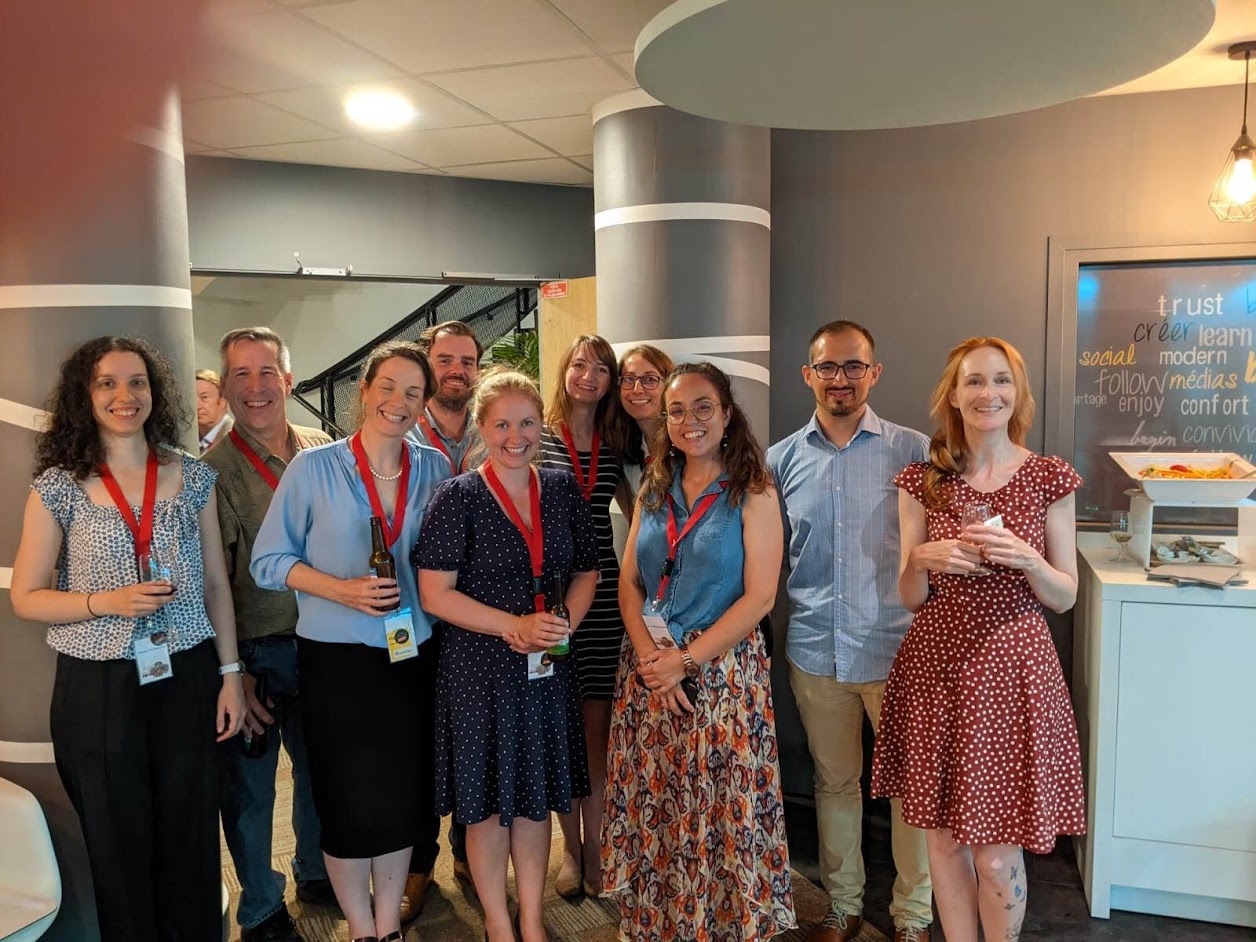
Now that the dust has settled after the international congress of Greek and Latin epigraphy (CIEGL) 2022 in Bordeaux here’s a report from a LatinNow perspective. I sent a gushing tweet one evening stating that we ‘enjoyed every minute of it’. I admit that this was not entirely true…
We had been planning to bring our French version of the VOCES POPVLI tour for many months and the couriering arrangements had started in January. In the fortnight before the conference, everything fell apart. The carnet we needed thanks to Brexit would cost £400 + VAT, suddenly the air freight option was removed altogether due to a lack of airport handlers and the last ditch attempts to organize by-road courier went from looking plausible, if costly, to eye-wateringly expensive in a matter of 24 hours thanks to driver availability (or lack thereof) and fuel costs. So couriering 13 packages would have cost in the region of £4000, several times our budget. I apologised profusely to the organizers and instead packed a smaller display of our research outputs and with the help of the team managed to get this to Bordeaux in one piece.
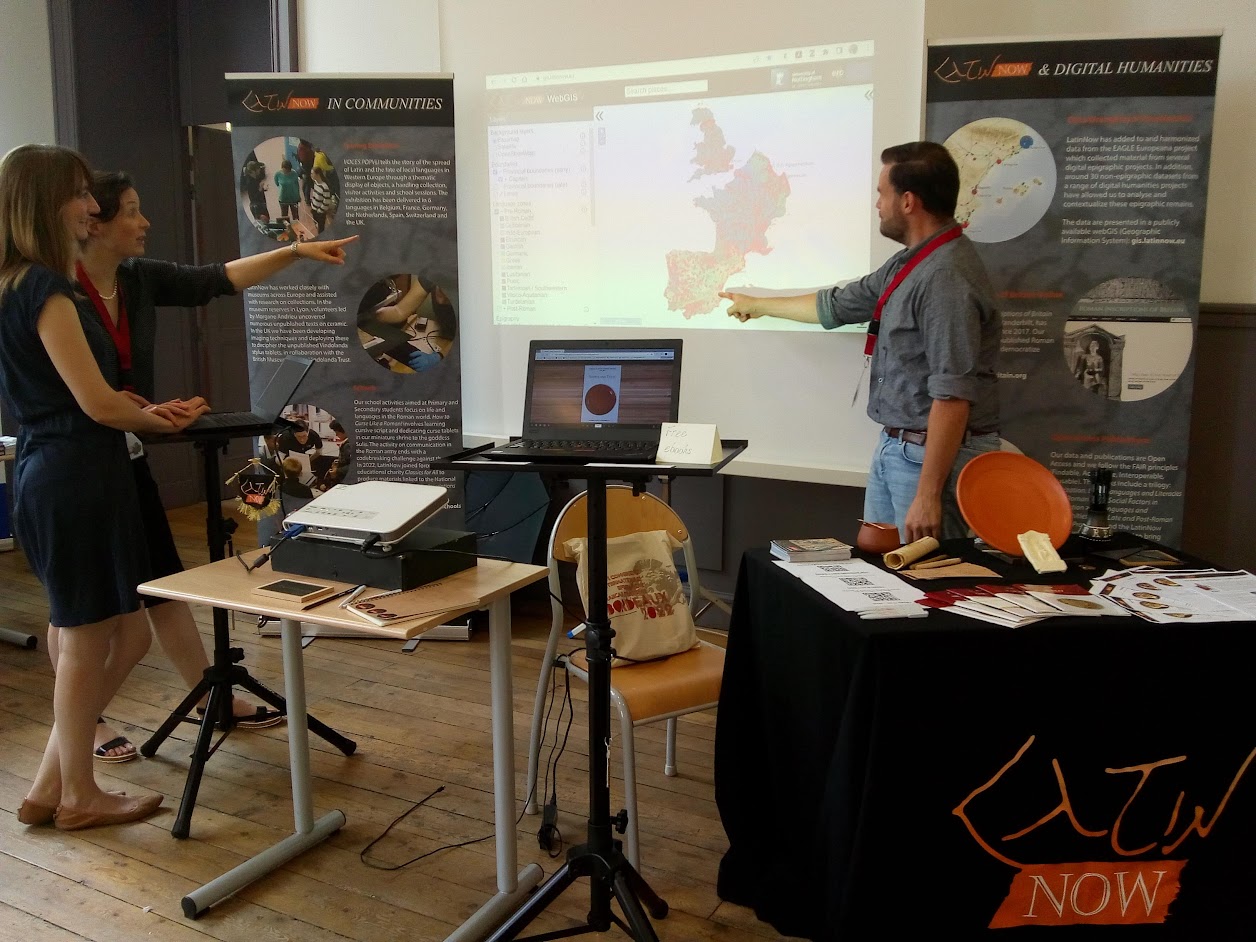
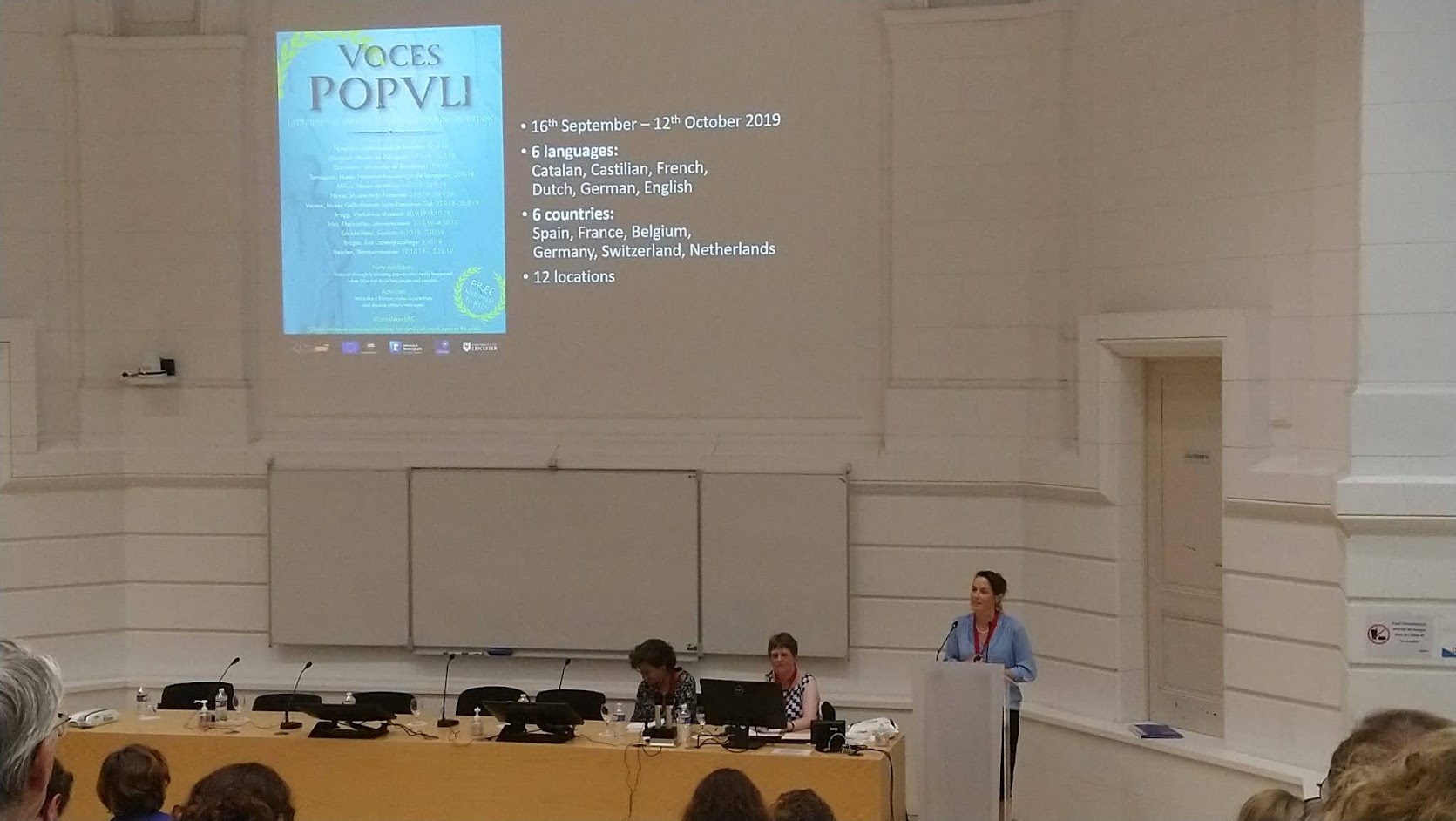
Handily Janie’s presentation of the tour in the outreach panel organized by Silvia Orlandi and Alison Cooley allowed those most interested in outreach attending the conference to get a taster. It was actually Janie’s last working day on LatinNow half-way through the conference and we are so grateful for her genius ideas, support and leadership, dating right back to the planning phase for the ERC grant submission. We’ll miss her, me especially.

At Bordeaux it quickly became clear that this smaller display of our outputs was in fact more appropriate: we had a stream of visitors who were interested in our ebooks, schools’ worksheets in six languages, replica writing equipment, Roman Inscriptions of Britain Online (given several shout outs in the plenaries) and, most importantly the beta version of our webGIS. The webGIS represents a Herculean team effort coordinating around 30 datasets from numerous digital humanities projects together with our own datasets on epigraphy (originally from EAGLE but augmented and enhanced) and writing equipment. The organizers had given us a projector and we demo-ed it to interested parties who wanted to see ‘all the Greek verse inscriptions in Britain’, or ‘defixiones across the west’. We had discussions about why certain objects with certain texts types were in certain locations – ‘perhaps there is a military settlement there?’ ‘Wait, let me just turn on the military layer – ooo, look, a fortlet’ etc…. We’ve been so nervous about launching the webGIS and it had only been delivered on the weekend at the start of the conference so it was a huge relief that it worked so reliably.
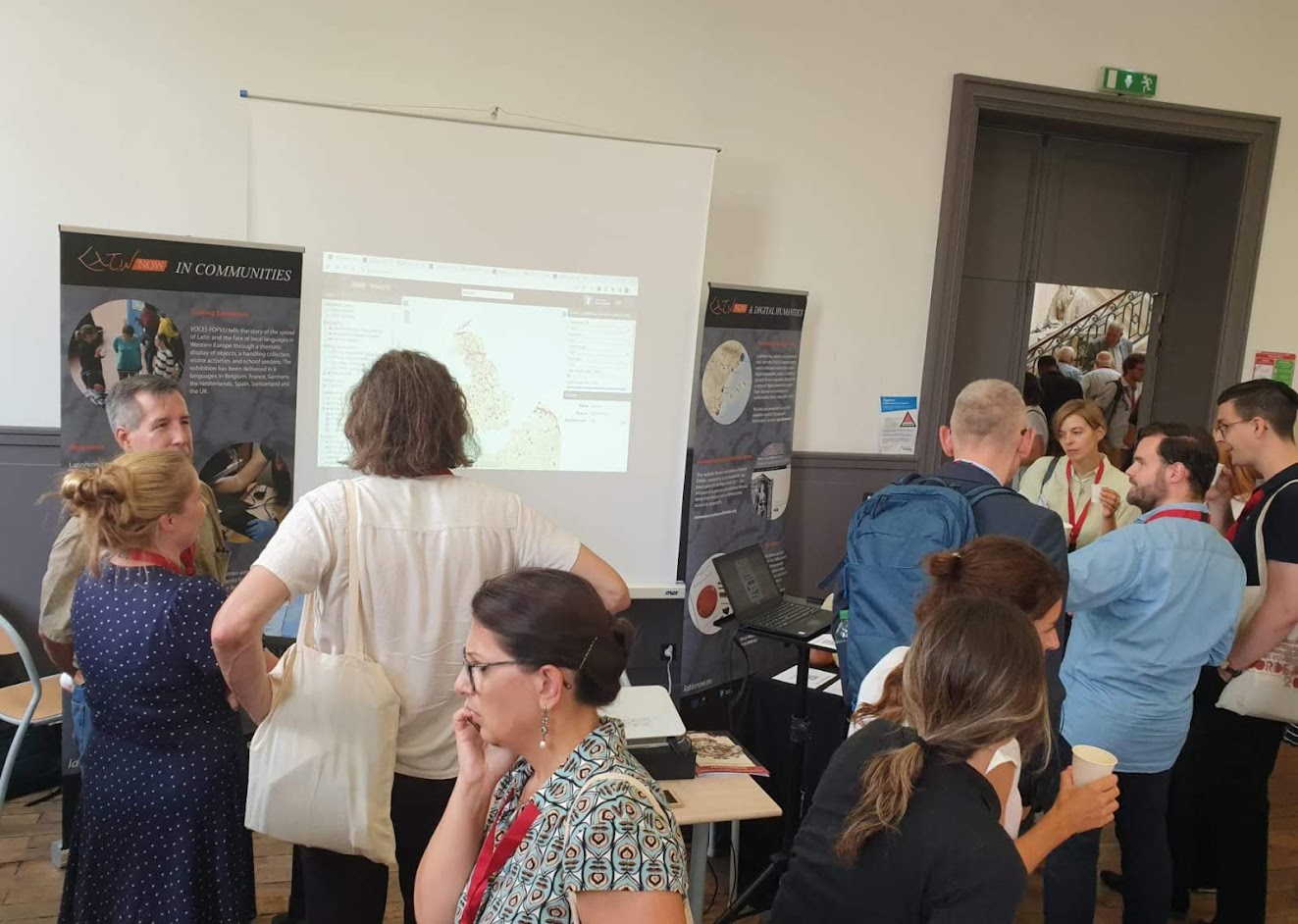
Most colleagues just said how much they liked it and that they would show it to their students, a select few spent ages playing with it and giving copious bits of invaluable feedback: ‘would it be better to have this layer renamed’, ‘I don’t like this colour’, ‘could we search for bilinguals?’ and suggesting further data that could be added. All of this has gone into a 3 page document for our brilliant developer Bart Noordervliet. As a result we have password protected the site until we can release the final Open Access version.
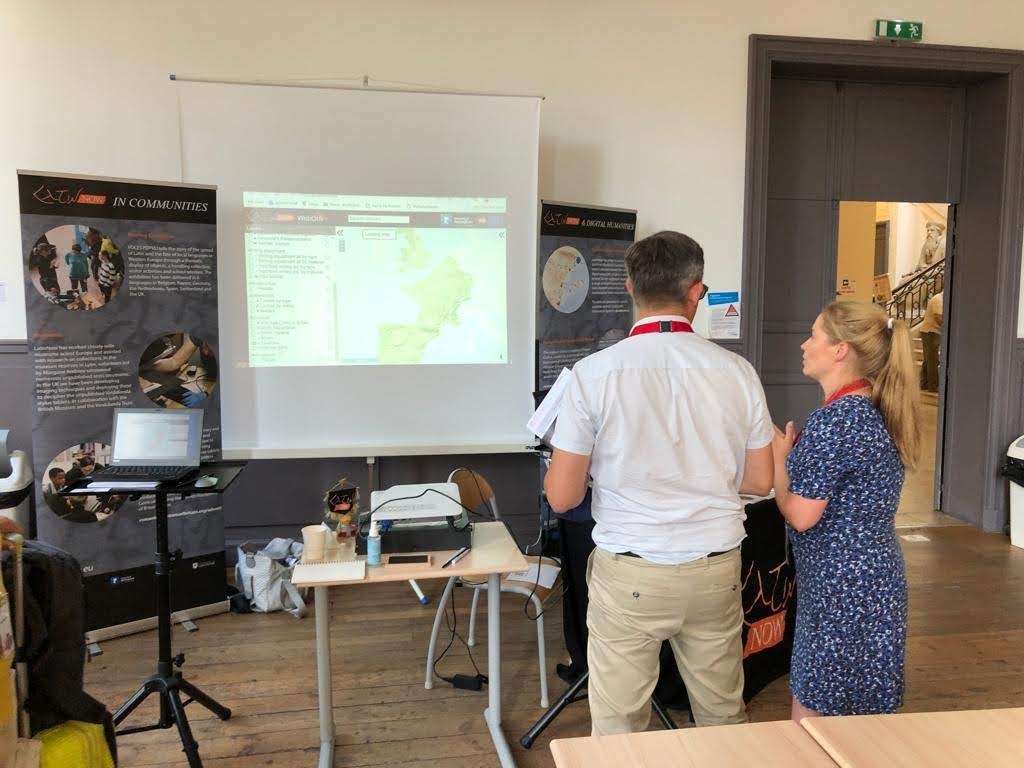
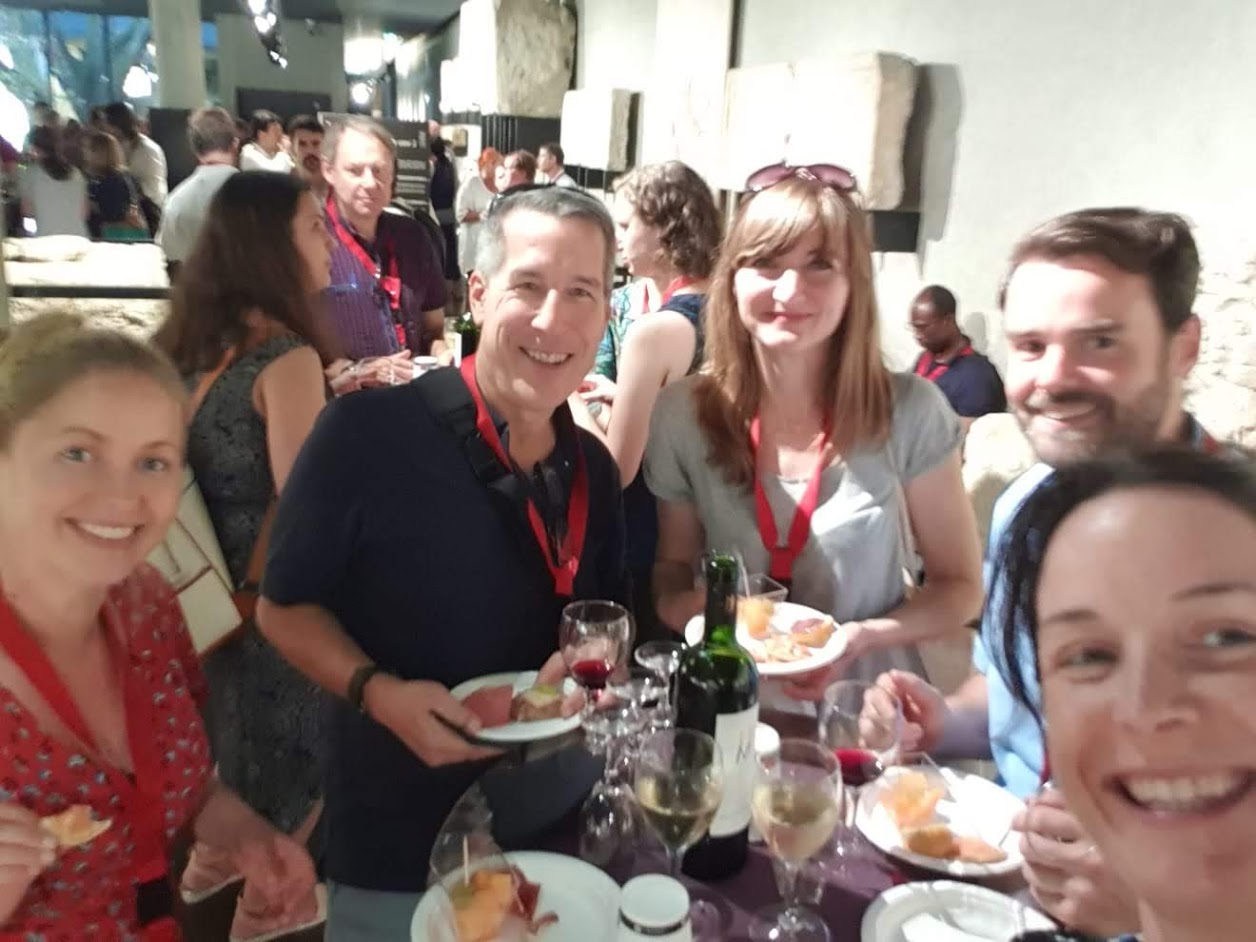
Just with this GIS dissemination the conference would have been exhausting, but we also had to try to attend as many talks as possible, catch up with all our colleagues, several of whom have been writing chapters for us, work to an unexpected deadline on the last day of the conference for final paperwork for Oxford University Press related to our trilogy, enjoy an excursion to beautiful Périgueux and stay up until at least 2 am everyday enjoying the company of friends. It was all wonderfully and tiringly multilingual. The congress proudly has 5 official languages, but there were many more languages represented by the delegates. At the end of the evening Anna Willi, who speaks at least six languages was mixing her Swiss German, French, English and Spanish and creating hybrid forms. At one point Pieter Houten remarked that she was now inadvertently speaking Limburgish (his home dialect). This embracing of multilingualism also carried over to the fascinating papers in the non-Latin and Greek epigraphies session, in which many of our friends were speaking.
But there were also some disappointing aspects too. There were incongruous and unpleasant outbursts of linguistic nationalism which left junior scholars with tears in their eyes. And I witnessed several examples of speakers and respondents using their platform to attack publicly other scholars and outputs. The worst of this involved the ganging up on a project led by a post-doc by professors in the field. By the end of the conference it felt as if a ‘Great Epigraphic Rift’, essentially about digital epigraphy, had formed. It was embarrassing and un-scholarly. A close friend and brilliant digital epigraphist has subsequently quietly remarked that perhaps after all he won’t consider getting into this academic side of things by doing a PhD. It would be great if the gate-keepers and belittlers (none of whom were in the hosting and organizing team I hasten to add) might pause for thought: in a few decades there might not be a field of epigraphy if people don’t feel comfortable entering it. The discipline is big enough for traditional methods and digital ones, and, perhaps most appealingly, a mix. Engagement, constructive criticism and respectfulness will get us much further as we continue to explore the wonderful world of inscriptions.